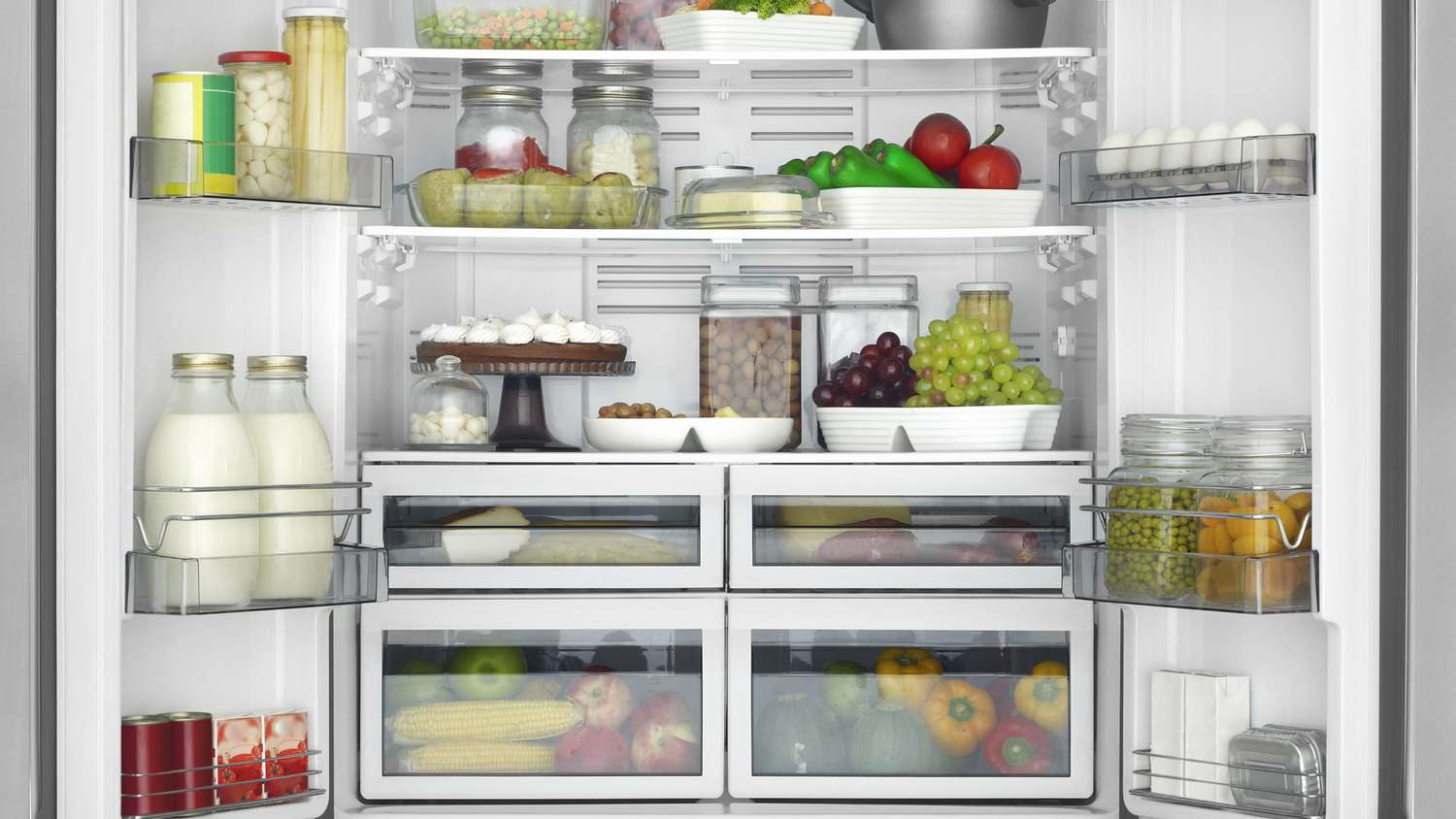

Articles
How To Store Food In The Refrigerator
Modified: January 18, 2024
Learn how to properly store food in the refrigerator to maximize freshness and prevent spoilage. Read our informative articles on the best practices for food storage.
(Many of the links in this article redirect to a specific reviewed product. Your purchase of these products through affiliate links helps to generate commission for Storables.com, at no extra cost. Learn more)
Understanding Refrigerator Temperature
When it comes to storing food in the refrigerator, maintaining the correct temperature is crucial. The ideal temperature range for your refrigerator is between 35°F (1.7°C) and 38°F (3.3°C). This temperature range helps to slow down the growth of bacteria and keep your food fresh for longer.
It is important to note that the temperature inside the refrigerator can vary, with certain parts being colder or warmer than others. To ensure an even temperature distribution, it is recommended to keep perishable foods on the middle shelves, away from the fridge’s walls and door.
Most modern refrigerators come equipped with a built-in thermometer or a digital display that allows you to monitor the temperature. If your fridge does not have this feature, you can easily purchase an inexpensive refrigerator thermometer from a kitchenware store.
Regularly check the temperature of your refrigerator to ensure it remains within the ideal range. Extreme fluctuations in temperature can lead to food spoilage and compromise the safety of your meals. Additionally, overcrowding the refrigerator can hinder proper airflow and affect temperature consistency, so make sure to leave enough space for the cool air to circulate.
By understanding and maintaining the optimal refrigerator temperature, you can ensure that your food stays fresh, flavorful, and safe to consume.
Key Takeaways:
- Maintain refrigerator temperature between 35°F (1.7°C) and 38°F (3.3°C) to slow bacteria growth, store perishable foods in the middle shelves, and use airtight containers for optimal food storage.
- Organize your refrigerator by creating zones, using transparent containers, and arranging items by expiration date to maximize space, reduce waste, and maintain food safety.
Read more: How To Store Morels In Refrigerator
Proper Food Storage Guidelines
Proper food storage is essential for maintaining food freshness and preventing foodborne illnesses. Follow these guidelines to ensure that your food stays safe to eat:
- Label and date: Before storing food in the refrigerator, make sure to label and date it. This helps you keep track of the shelf life of different items and prevents confusion.
- Separate raw and cooked foods: To avoid cross-contamination, store raw meats, poultry, and seafood separately from ready-to-eat foods. Use sealed containers or plastic bags to prevent juices from raw meats from dripping onto other foods.
- Use airtight containers: Using airtight containers or resealable bags helps to maintain the freshness of your food and prevent odors from spreading throughout the refrigerator.
- Wrap meats properly: When storing meats, wrap them tightly in plastic wrap or place them in sealed containers to prevent exposure to air, which may cause freezer burn or spoilage.
- Optimal storage containers: Use glass, plastic, or stainless steel containers and avoid storing food in cans or metal containers, as the metal can react with acidic foods and affect their taste.
- Store in appropriate zones: Place ready-to-eat foods, such as leftovers, cooked meals, and fruits and vegetables, in the upper shelves of the refrigerator. Raw meats, poultry, and seafood should be stored in the lower shelves, where it’s coldest.
- Refrigerate perishable foods promptly: Perishable foods like dairy products, eggs, and deli meats should be refrigerated as soon as you bring them home from the grocery store. Don’t leave them out at room temperature for too long.
- Don’t overload the refrigerator: Avoid overpacking the fridge as it can hinder proper airflow, leading to uneven cooling and potential spoilage. Maintain some space between items for better air circulation.
- Regularly check for spoilage: Regularly inspect your refrigerator for any signs of spoiled or expired food. Discard any items that have mold, unpleasant odors, or a slimy texture.
- Follow recommended storage times: Different foods have varying storage times. Check food safety guidelines or consult a reliable source to determine the appropriate storage duration for different types of food.
By following these proper food storage guidelines, you can maintain food quality, prevent waste, and ensure the safety of your meals.
Organizing Your Refrigerator
An organized refrigerator not only makes it easier to find what you need but also helps in maintaining food safety and reducing waste. Follow these tips to effectively organize your refrigerator:
- Create zones: Divide your refrigerator into different zones for specific food groups. For instance, designate one section for dairy products, another for fruits and vegetables, and a separate zone for meats and seafood. This way, you can easily locate items and prevent cross-contamination.
- Use transparent containers: Opt for clear plastic or glass containers for storing smaller items like sauces, condiments, and leftovers. This allows you to quickly see what’s inside without having to search through multiple containers.
- Arrange by expiration date: Place newer items behind older ones to ensure that you use up older items before they expire. This reduces food waste and prevents the risk of consuming expired food.
- Utilize fridge organizers: Invest in adjustable shelves, drawer dividers, and bins to create additional storage space and keep similar items grouped together. This helps optimize the available space and keeps your refrigerator neat and tidy.
- Keep frequently used items accessible: Store frequently used items, such as milk, eggs, and condiments, at eye level for easy access. This saves time and reduces the chances of knocking over other items while searching for them.
- Store delicate produce correctly: Some fruits and vegetables are more sensitive to temperature and ethylene gas, which can cause them to ripen faster. Store delicate produce, such as berries and leafy greens, in breathable containers or perforated bags to maintain their freshness and prevent them from wilting.
- Regularly clean up spills: Clean up any spills or leaks promptly to prevent bacteria growth and odors. Wipe down shelves and drawers with a mild detergent or vinegar solution to keep your refrigerator clean and hygienic.
- Rotate items: Periodically rotate items in your refrigerator to ensure that everything gets used. Bring older items to the front and move newer ones to the back. This helps you avoid forgetting about items and allows you to use them before they spoil.
- Consider temperature-sensitive items: Certain items, like eggs and butter, may require specific storage conditions. Consult the packaging or reliable sources for guidance on the best placement for such temperature-sensitive items in your refrigerator.
- Maximize door space: The refrigerator door tends to be warmer, so use it to store items that are less temperature-sensitive, such as condiments, pickles, and beverages. Avoid placing highly perishable items, like milk, on the refrigerator door.
By implementing these organizing techniques, you can efficiently utilize the space in your refrigerator, reduce food waste, and maintain a clean and well-organized kitchen.
Storing Fruits and Vegetables
Proper storage of fruits and vegetables is essential to maintain their freshness, flavor, and nutritional value. Follow these tips to maximize the shelf life of your produce:
- Separate ethylene producers and sensitive produce: Ethylene is a natural gas released by certain fruits and vegetables that can accelerate the ripening process of other ethylene-sensitive produce. Keep ethylene producers, such as apples, bananas, and tomatoes, separate from ethylene-sensitive items like broccoli, leafy greens, and strawberries.
- Keep produce dry: Moisture can cause certain fruits and vegetables to deteriorate quickly. Before storing, make sure to remove any excess moisture from produce by gently patting them dry or using a salad spinner. Store them in dry containers or perforated bags to prevent moisture buildup.
- Store some fruits and vegetables at room temperature: Not all produce needs to be stored in the refrigerator. Items like bananas, citrus fruits, avocados, onions, garlic, and potatoes are best stored at room temperature to preserve their taste and texture.
- Refrigerate delicate produce: Most fruits and vegetables benefit from being stored in the refrigerator. However, delicate produce like berries, herbs, and leafy greens require extra care. Place them in breathable containers or perforated bags to maintain their freshness and prevent them from wilting.
- Remove tops from root vegetables: If you store root vegetables like carrots, beets, and radishes in the refrigerator, it’s best to remove their leafy tops. The tops draw moisture away from the root, causing them to become soft and wilted more quickly.
- Store cut fruits and vegetables properly: After cutting fruits and vegetables, transfer them to airtight containers or cover them tightly with plastic wrap before putting them in the refrigerator. This helps to retain their moisture and prevent them from becoming dry or absorbing odors.
- Don’t wash produce before storing: Washing fruits and vegetables before storing can promote spoilage and mold growth. Instead, wash them just before consuming to maintain their freshness and prevent premature decay.
- Rotate produce regularly: Consume older fruits and vegetables before using newly purchased ones. This ensures that nothing goes to waste and allows you to enjoy the peak flavor and quality of your produce.
- Check for spoilage: Regularly inspect your stored produce for signs of spoilage, such as mold, soft spots, or an unpleasant odor. Remove any spoiled items immediately to prevent contamination of other fruits and vegetables.
- Consider freezing: If you have excess fruits or vegetables that you can’t consume before they spoil, consider freezing them. Freezing preserves their freshness and allows you to enjoy them later in smoothies, soups, or other dishes.
By properly storing your fruits and vegetables, you can extend their shelf life and enjoy the maximum flavor, nutrition, and quality of your produce.
Storing Meat and Seafood
Proper storage of meat and seafood is crucial to ensure food safety and maintain their quality. Follow these guidelines to store meat and seafood effectively:
- Keep meats and seafood cold: Perishable items like meat and seafood should be stored at temperatures below 40°F (4°C). Place them in the coldest part of your refrigerator, typically the lower shelves.
- Use proper packaging: For raw meats and seafood, wrap them tightly in plastic wrap or place them in sealed containers to prevent contact with air and potential cross-contamination with other foods.
- Date and label packages: Always label packages with the date of purchase to keep track of their freshness. This will help you ensure that you use them within their recommended storage periods.
- Store raw meats separately: To prevent cross-contamination, store different types of raw meats, such as beef, poultry, and pork, in separate containers or use individual plastic bags. This minimizes the risk of bacteria spreading from one type of meat to another.
- Use seafood within 1-2 days: Fresh seafood is highly perishable, so it’s best to consume it within 1-2 days of purchase. If you won’t be using it within that time frame, consider freezing it to preserve its quality.
- Keep thawed meats and seafood refrigerated: If you thaw frozen meats or seafood in the refrigerator, store them in the refrigerator until you’re ready to cook them. Do not refreeze thawed items, as this can affect their texture and quality.
- Marinate in the refrigerator: When marinating meats or seafood, always do so in the refrigerator. Marinating at room temperature can promote bacterial growth and compromise food safety.
- Store cooked meats properly: Leftover cooked meats should also be stored in the refrigerator. Make sure to cool them down quickly before storing them in airtight containers or sealed plastic bags.
- Follow storage guidelines for specific meats and seafood: Different types of meats and seafood may have specific storage requirements. Refer to reliable sources or packaging instructions to determine the optimal storage conditions and durations for specific items.
- Check for spoilage: Regularly inspect stored meats and seafood for any signs of spoilage, such as an off odor, slime, or discoloration. If you notice any of these signs, discard the item immediately.
- Consider freezing: To extend the shelf life of meats and seafood, consider freezing them. Properly wrap them in freezer-safe packaging, and label them with the date. Frozen meats and seafood can typically be stored for several months.
By following these storage guidelines, you can ensure the safety and quality of your meats and seafood, reducing the risk of foodborne illnesses and enjoying delicious meals.
Store raw meat, poultry, and seafood on the bottom shelf of the refrigerator to prevent any drips from contaminating other foods. Keep fruits and vegetables in the crisper drawer to maintain freshness.
Storing Dairy Products
Proper storage of dairy products is essential to maintain their freshness, quality, and safety. Follow these guidelines to store dairy products effectively:
- Check expiration dates: Before purchasing dairy products, always check the expiration dates to ensure their freshness. Choose products with the furthest expiration date for longer shelf life.
- Refrigerate immediately: Dairy products should be refrigerated as soon as you bring them home from the grocery store. The optimal temperature for storing dairy is between 35°F (1.7°C) and 38°F (3.3°C).
- Use airtight containers: Transfer dairy products to airtight containers to prevent odors from permeating and affecting their flavor. This helps to maintain their original taste and prevents cross-contamination with other foods.
- Keep milk on the colder shelves: Store milk containers on the colder shelves of your refrigerator, typically on the lower shelves. This ensures that they stay at a consistent temperature and prevents spoilage.
- Keep butter covered: Butter is prone to absorbing odors from the refrigerator, so keep it covered or in a sealed butter dish to maintain its freshness and flavor.
- Store cheese properly: Different types of cheese have varying storage requirements. Hard cheeses, like cheddar and Parmesan, can be wrapped in wax paper or plastic wrap and stored in the refrigerator. Soft and semi-soft cheeses, like brie and mozzarella, should be wrapped in their original packaging or plastic wrap.
- Avoid storing dairy in the fridge door: The refrigerator door is the warmest part of the fridge, so avoid storing dairy products there, as the temperature fluctuations can lead to spoilage.
- Check for spoilage: Regularly inspect dairy products for any signs of spoilage, such as mold, discoloration, or an off odor. If you notice any of these signs, discard the product immediately.
- Don’t freeze milk or yogurt: Milk and yogurt do not freeze well and may change in texture and flavor. It’s best to consume them before their expiration dates.
- Properly wrap leftover cheese: If you have leftover cheese, wrap it tightly in plastic wrap or place it in an airtight container to maintain its freshness. Stored cheese should be used within a reasonable time frame to ensure taste and quality.
- Store sour cream and yogurt upside-down: To create a seal and preserve the freshness, store containers of sour cream and yogurt upside-down in the refrigerator. This helps to prevent air from entering and spoiling the contents.
By following these storage tips, you can prolong the shelf life of dairy products, minimize waste, and enjoy them at their best quality.
Storing Leftovers and Cooked Foods
Properly storing leftovers and cooked foods is crucial to maintain their quality, prevent foodborne illnesses, and reduce waste. Follow these guidelines to store leftovers and cooked foods effectively:
- Cool down food before storing: Allow cooked food to cool down at room temperature for no more than 2 hours before storing it in the refrigerator. Rapid cooling helps prevent bacterial growth.
- Divide into smaller portions: Divide large amounts of leftover food into smaller portions before storing. This allows for quicker cooling and makes it easier to reheat only the amount needed.
- Choose appropriate containers: Use airtight containers, sealable bags, or covered microwave-safe dishes to store leftovers. These containers help maintain the freshness, minimize moisture loss, and prevent the absorption of odors from the refrigerator.
- Label and date leftovers: Properly label the containers with the name of the dish and the date it was prepared. This helps you keep track of the shelf life and avoid consuming expired food.
- Refrigerate promptly: Place leftovers in the refrigerator within 2 hours of cooking or serving. The ideal refrigerator temperature for storing leftovers is between 35°F (1.7°C) and 38°F (3.3°C).
- Store different food groups separately: When storing leftovers, separate different food groups to maintain their individual flavors and prevent cross-contamination. Keep meats, poultry, and seafood in separate containers from vegetables, grains, and sauces.
- Consume within 3-4 days: Cooked foods and leftovers should generally be consumed within 3-4 days of refrigeration. If you’re unable to consume them within this timeframe, consider freezing them for later use.
- Reheat to proper temperature: When reheating leftovers, ensure they reach an internal temperature of at least 165°F (74°C) to kill any potential bacteria. Use a food thermometer to check the temperature.
- Freeze extra portions: If you have leftovers that you won’t be able to consume within a few days, consider freezing them. Properly wrap the food in freezer-safe packaging and label it with the name and date. Frozen leftovers can typically be stored for several months.
- Discard spoiled leftovers: If you notice any signs of spoilage, such as an off odor, mold, or unusual texture, discard the leftovers immediately. It’s better to be safe than sorry when it comes to consuming potentially spoiled food.
- Avoid reusing certain leftovers: Some foods, like cooked rice, should not be reheated multiple times as they can pose a higher risk of food poisoning. Use your judgment and rely on food safety guidelines to determine which leftovers are safe to reuse.
By following these guidelines, you can safely store leftovers, minimize waste, and enjoy delicious meals even after they’ve been cooked.
Storing Condiments and Sauces
Proper storage of condiments and sauces is important to maintain their flavor, quality, and safety. Follow these guidelines to store condiments and sauces effectively:
- Read labels for storage instructions: Different condiments and sauces may have specific storage recommendations on their labels. Read and follow these instructions for optimal freshness and quality.
- Store in the refrigerator: Most condiments and sauces, especially those that contain perishable ingredients like dairy, eggs, or seafood, should be stored in the refrigerator. The cool temperature helps to preserve freshness and prevent spoilage.
- Keep lids or caps tightly closed: Ensure that the lids or caps of condiment and sauce bottles are tightly closed when not in use. This helps to maintain their flavor, prevent oxidation, and prevent odors from escaping or permeating.
- Check condiments for separation or spoilage: Some condiments, like salad dressings or mayonnaise-based sauces, may separate or spoil over time. Before using, check for any signs of separation, mold, or an off odor. Discard any condiments that appear spoiled.
- Store hot sauces and vinegars at room temperature: Certain condiments like hot sauces, vinegars, and some oils can be stored at room temperature. However, it’s still important to keep them away from direct sunlight and in a cool, dry place.
- Avoid cross-contamination: When using condiments directly from the bottle, use a clean utensil to scoop out what you need. This prevents cross-contamination from utensils that may have come into contact with raw or unclean surfaces.
- Refrigerate homemade condiments: If you make homemade condiments or sauces, it’s best to store them in the refrigerator. Homemade versions may not have preservatives like store-bought products, so refrigeration helps to extend their shelf life.
- Rotate and use within recommended timeframes: Regularly check the expiration dates or recommended use-by dates on condiments and sauces. Use them within the suggested timeframes for the best flavor and quality.
- Keep refrigerated condiments in the door or designated shelf: Reserve a shelf or section on the door of your refrigerator specifically for condiments. This helps you easily locate them and prevents overcrowding on main shelf areas.
- Keep sauces and dressings in the original containers: To maintain freshness and prevent contamination, it’s often best to store sauces and dressings in their original bottles or jars. Avoid transferring them to alternative containers that may be less airtight.
By following these storage guidelines, you can ensure that your condiments and sauces stay fresh, flavorful, and safe to consume for an extended period.
Tips for Maximizing Refrigerator Shelf Life
To ensure the longevity and quality of your food, it’s important to maximize the shelf life of your refrigerator. Follow these simple tips to optimize your refrigerator’s performance and keep your food fresher for longer:
- Keep your refrigerator clean: Regularly clean your refrigerator to prevent the buildup of bacteria, odors, and mold. Wipe down shelves, drawers, and walls with a mixture of mild detergent and water.
- Organize and declutter: Proper organization helps improve airflow and maintain consistent temperatures throughout the refrigerator. Remove any unnecessary items and group similar foods together.
- Do not overpack the refrigerator: Overcrowding the refrigerator can hinder proper airflow and prevent the even distribution of cold air. Leave some space between items for the cool air to circulate.
- Place perishable items on the middle shelves: The middle shelves of the refrigerator are the most consistent in temperature. Store perishable items, such as dairy products, eggs, and cooked leftovers, on these shelves to keep them at their optimal freshness.
- Use airtight containers: Store leftovers and other food items in airtight containers or sealable bags. This helps to maintain moisture levels, prevent cross-contamination, and preserve the flavors of your food.
- Monitor refrigerator temperature: Set your refrigerator’s temperature between 35°F (1.7°C) and 38°F (3.3°C) to ensure food safety. Use a refrigerator thermometer to regularly check and adjust the temperature if necessary.
- Store raw meats and seafood separately: Prevent cross-contamination by storing raw meats and seafood in sealed containers or plastic bags, away from other food items. This helps to minimize the risk of bacteria spreading and causing foodborne illnesses.
- Regularly check expiry dates: Keep track of the expiry dates on your food items and prioritize consuming those that are closer to expiration. This reduces the chances of consuming expired foods and minimizes food waste.
- Rotate your stock: When storing new groceries, move older items to the front of the refrigerator to ensure they are used before their expiration dates. This practice encourages rotation and reduces the likelihood of forgotten items spoiling.
- Keep the refrigerator door closed: Avoid frequent and prolonged opening of the refrigerator door, as this can cause temperature fluctuations. Inspect your fridge’s contents quickly before closing the door to conserve energy and maintain optimal storage conditions.
- Regularly defrost and clean the freezer: If your refrigerator has a freezer compartment, regularly defrost and clean it to maintain its efficiency. Too much frost buildup can decrease storage capacity and hinder proper cooling.
By following these tips, you can extend the shelf life of your refrigerator and keep your food fresh, safe to consume, and waste-free.
Read more: How To Store Butter Without Refrigeration
Cleaning and Maintaining Your Refrigerator
Regular cleaning and maintenance of your refrigerator are essential for ensuring optimal performance, preventing odors, and maintaining food safety. Follow these guidelines to keep your refrigerator clean and well-maintained:
- Regularly wipe down shelves and drawers: Clean spills and remove any food residues from shelves and drawers using a mixture of mild detergent and warm water. Dry them thoroughly before putting the items back.
- Remove and clean removable parts: Take out any removable parts, such as shelves, drawers, and door racks, and clean them separately. Wash them with warm, soapy water, and dry them thoroughly before reassembling them.
- Check and clean the door gaskets: Inspect the door gaskets for any signs of debris, mold, or buildup. Clean them with a damp cloth and mild detergent to maintain their tight seal and prevent air leakage.
- Defrost the freezer: If your refrigerator has a freezer compartment, regularly defrost it to prevent excessive frost buildup. Follow the manufacturer’s instructions or use the defrost function if available.
- Keep the condenser coils clean: The condenser coils, located either at the back or underneath the refrigerator, can accumulate dust and dirt over time. Use a vacuum cleaner or a brush to gently remove the debris and ensure proper heat dissipation.
- Check and replace water filters: If your refrigerator has a water or ice dispenser, periodically check and replace the water filters as recommended by the manufacturer. This helps maintain the quality of the water and ice that you consume.
- Keep the refrigerator level: Make sure your refrigerator is sitting level on the floor. Use a leveling tool to check and adjust the legs if necessary. This ensures proper door closure and optimal performance.
- Empty and clean the drip pan: The drip pan collects condensation and defrost water. Empty and clean it regularly to prevent the growth of mold or bacteria. Consult your refrigerator’s manual for instructions on how to access and clean the drip pan.
- Check the temperature regularly: Use a refrigerator thermometer to monitor the temperature and ensure it remains within the recommended range of 35°F (1.7°C) to 38°F (3.3°C). Adjust the temperature settings if needed.
- Inspect and replace light bulbs: Check the refrigerator’s interior light bulbs regularly and replace them when they burn out. This facilitates visibility and helps you easily locate items inside the fridge.
- Avoid using abrasive cleaners: When cleaning your refrigerator, avoid using abrasive cleaners or sharp objects that can scratch the surface. Opt for mild detergents or natural cleaning solutions to avoid damaging the interior or exterior of the refrigerator.
By following these cleaning and maintenance tips, you can keep your refrigerator in optimal condition, prolong its lifespan, and ensure that your food stays fresh, safe, and free from odors.
Frequently Asked Questions about How To Store Food In The Refrigerator
Was this page helpful?
At Storables.com, we guarantee accurate and reliable information. Our content, validated by Expert Board Contributors, is crafted following stringent Editorial Policies. We're committed to providing you with well-researched, expert-backed insights for all your informational needs.
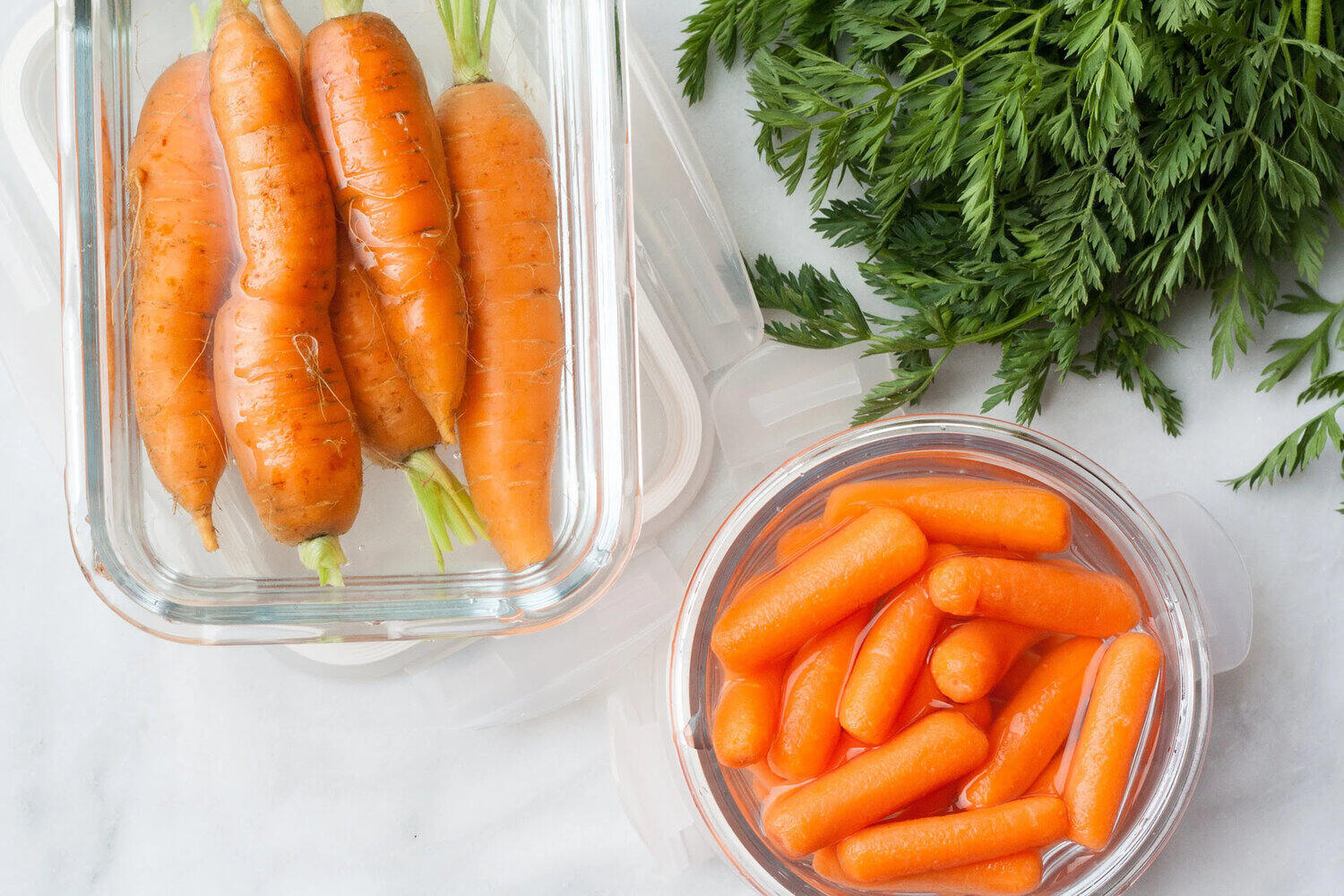
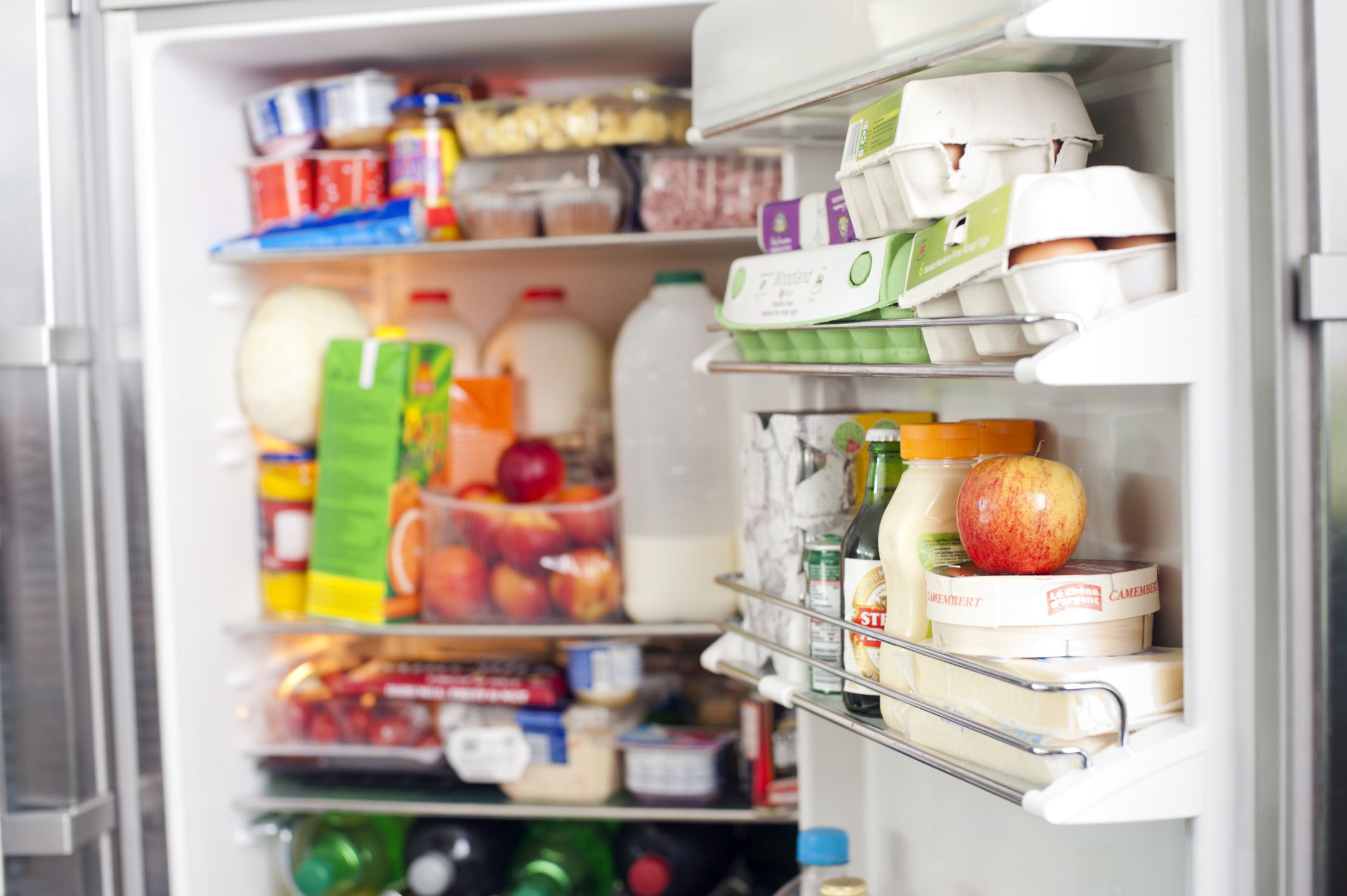
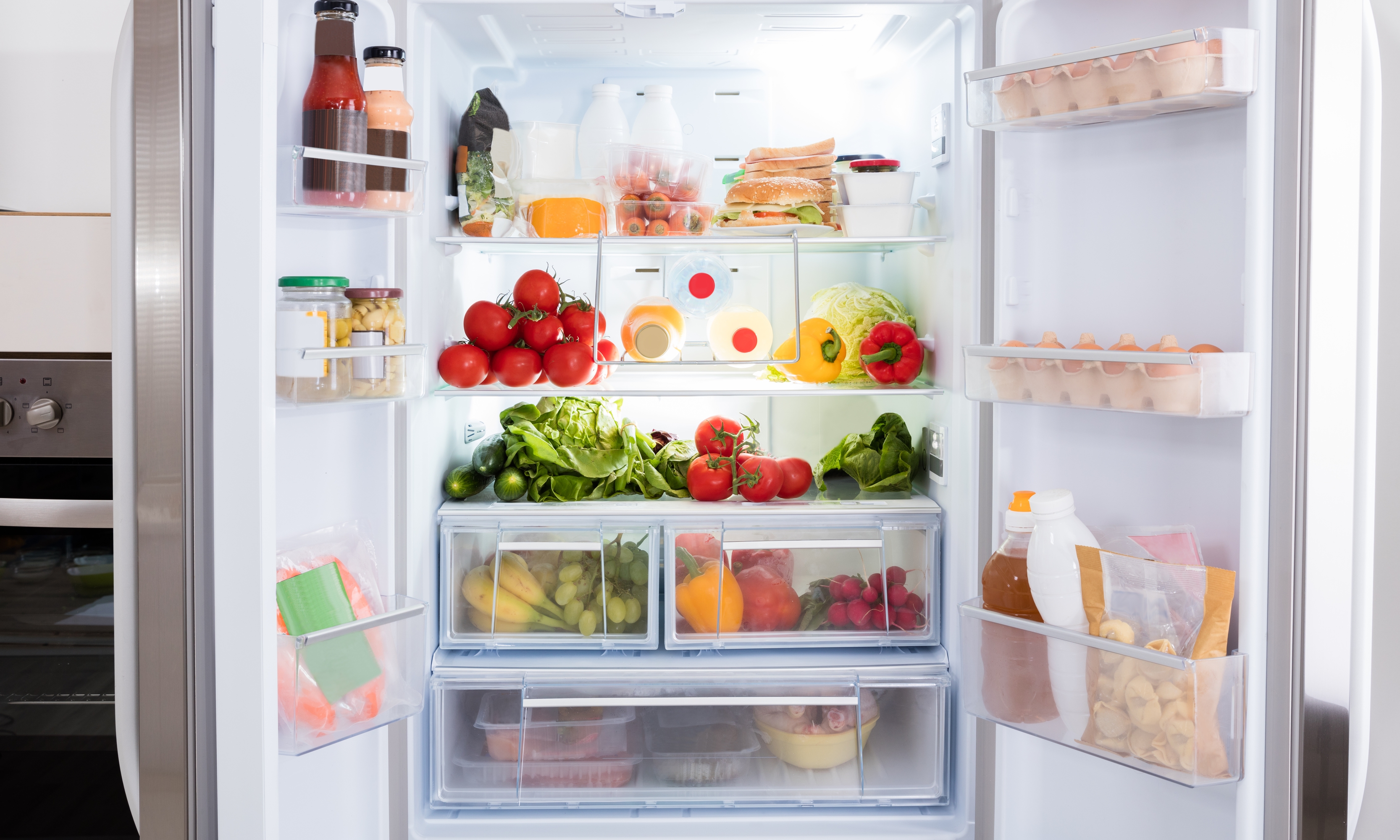
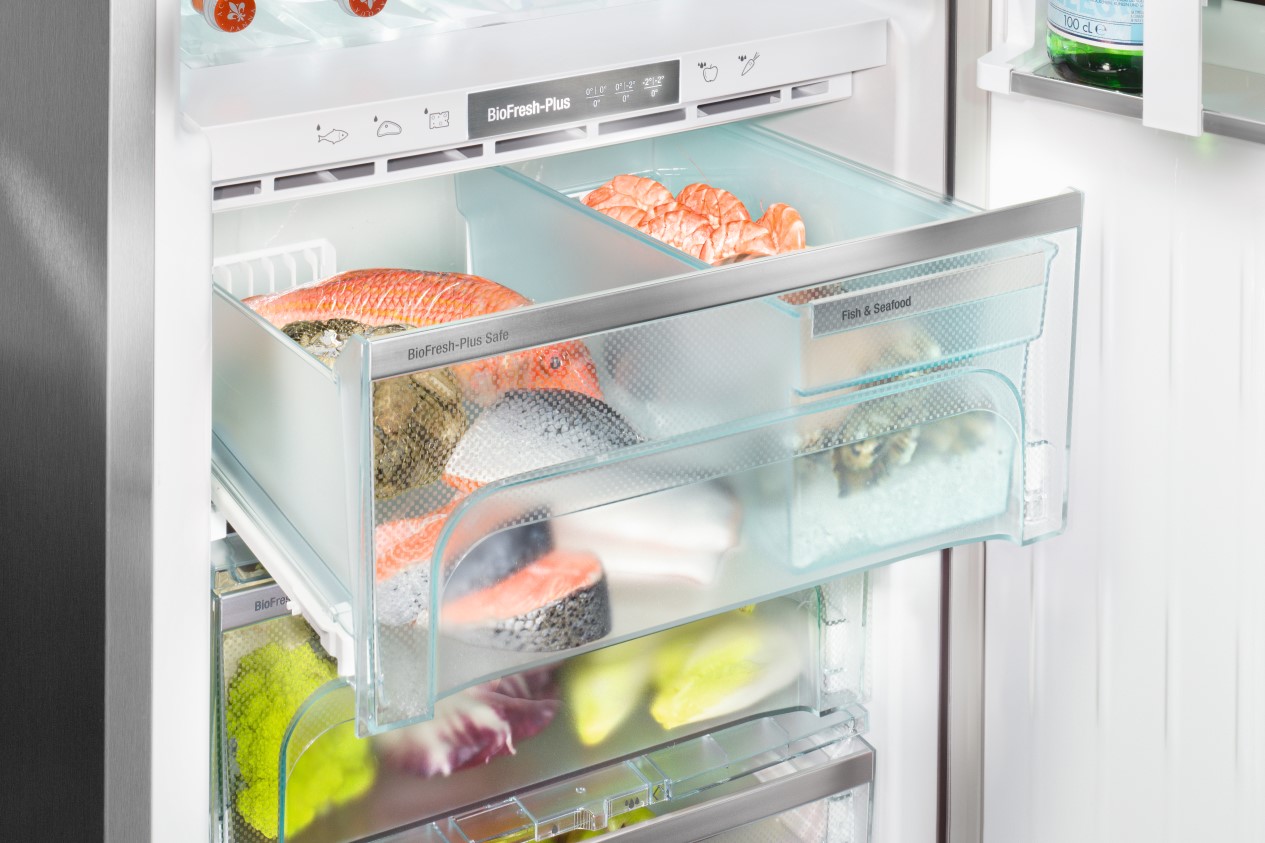
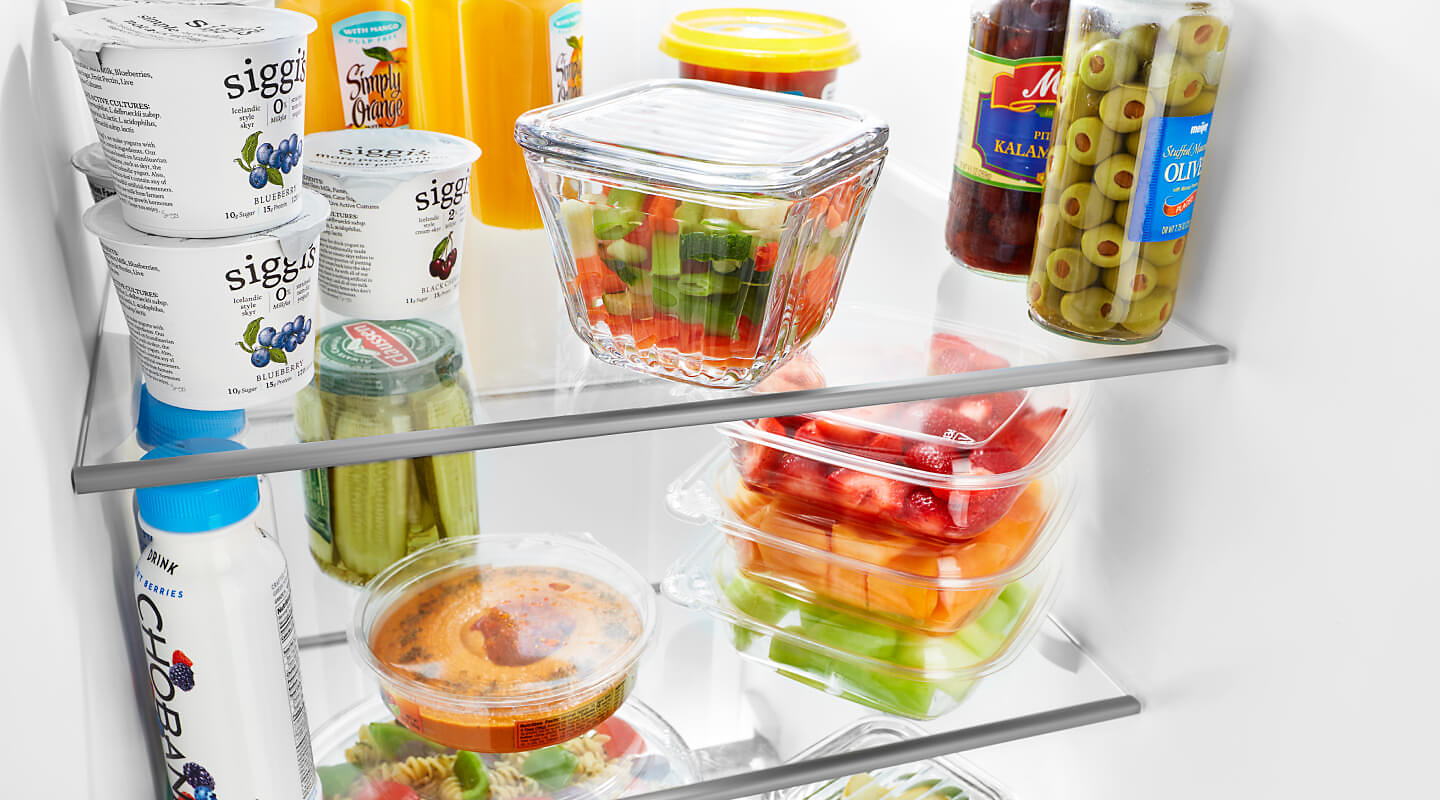
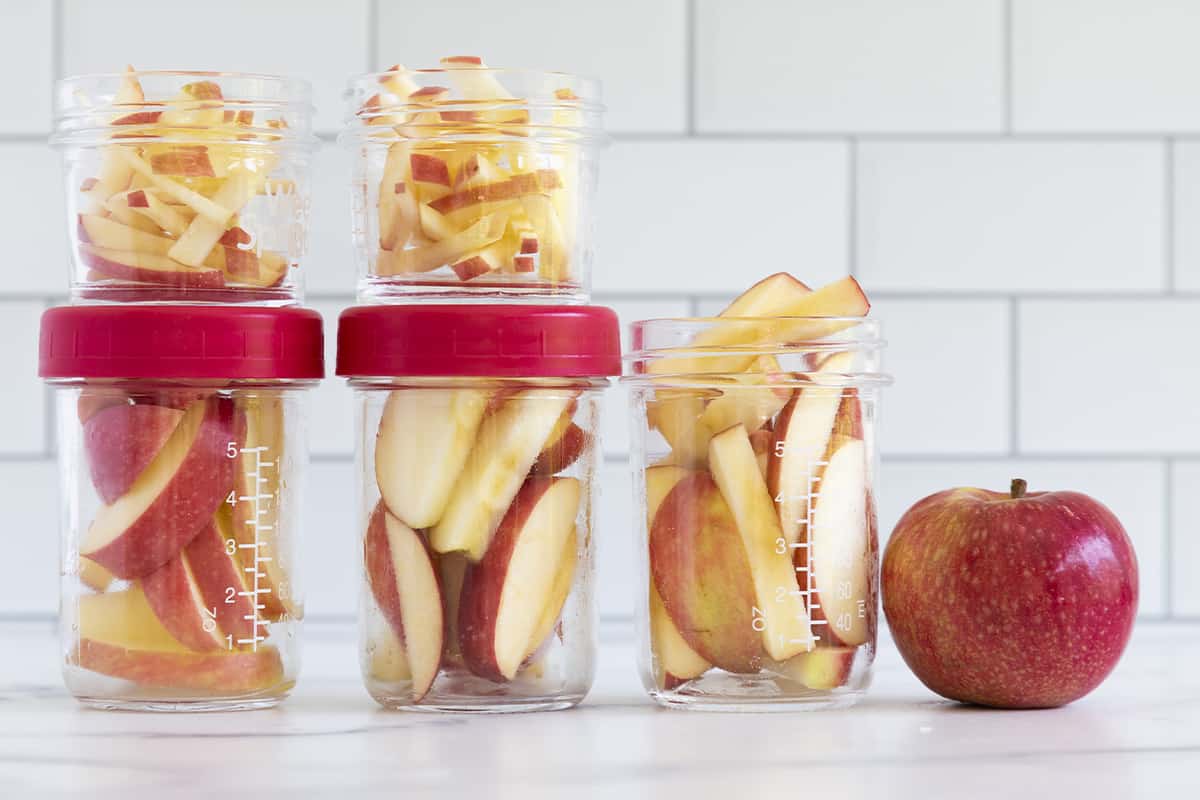
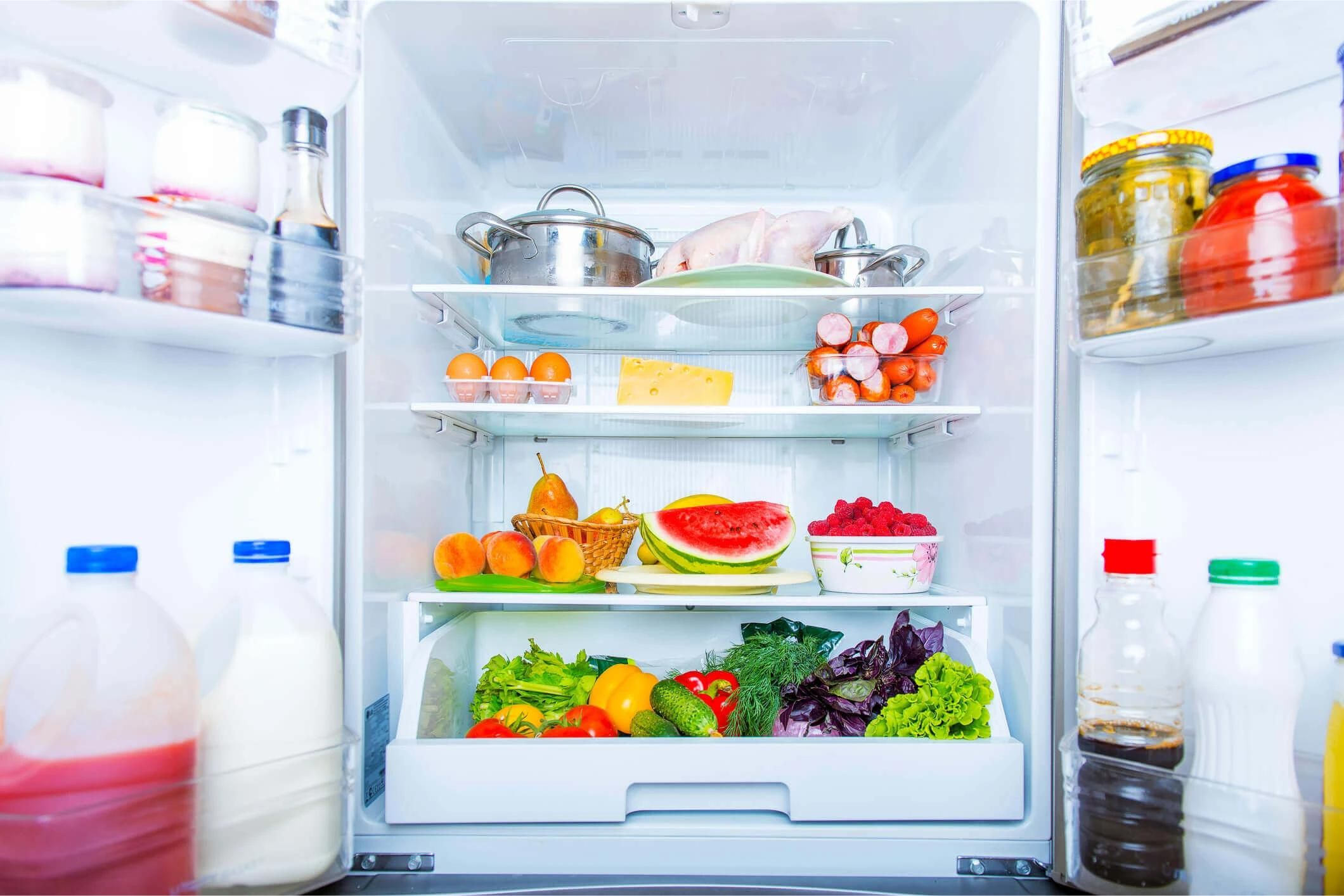
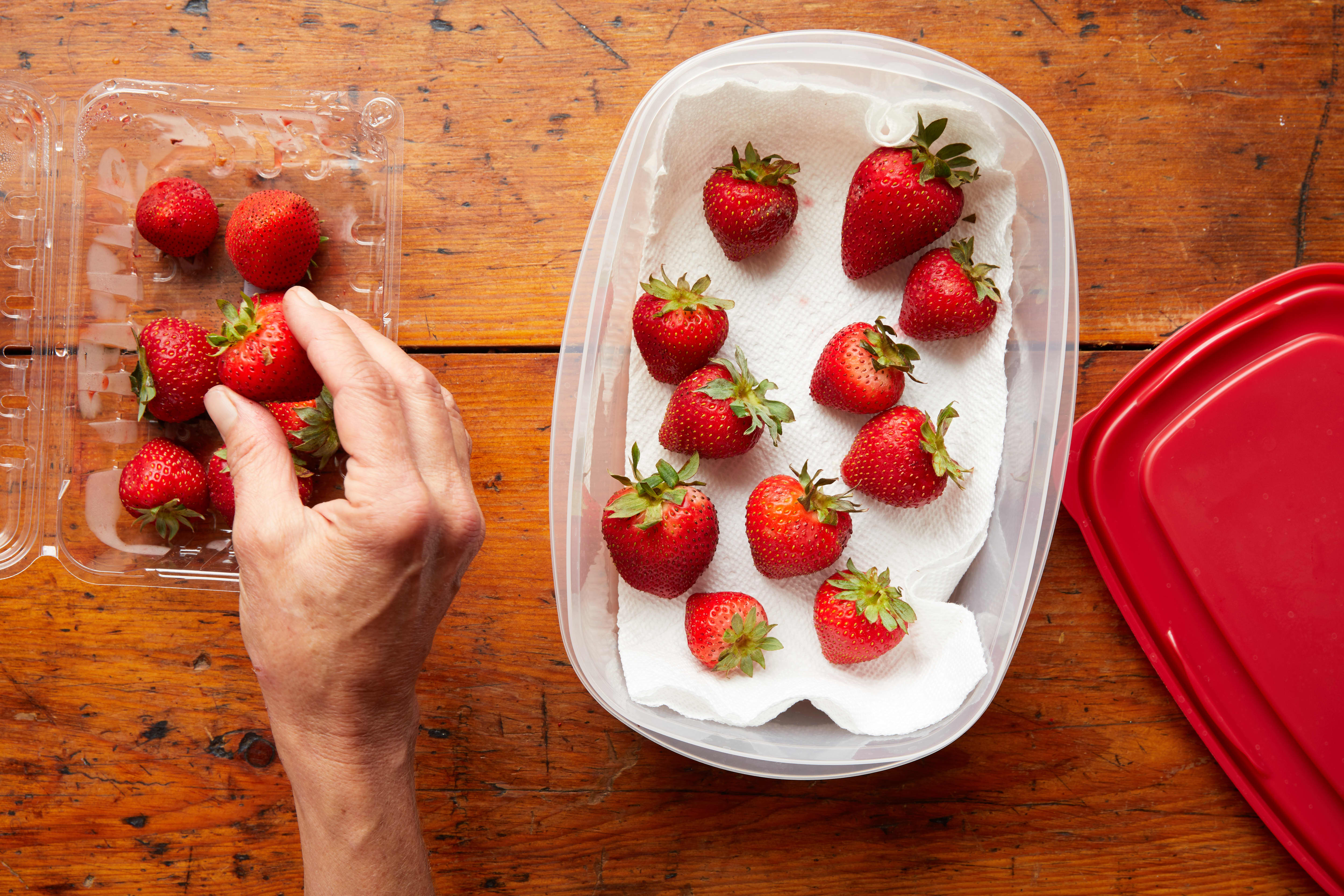
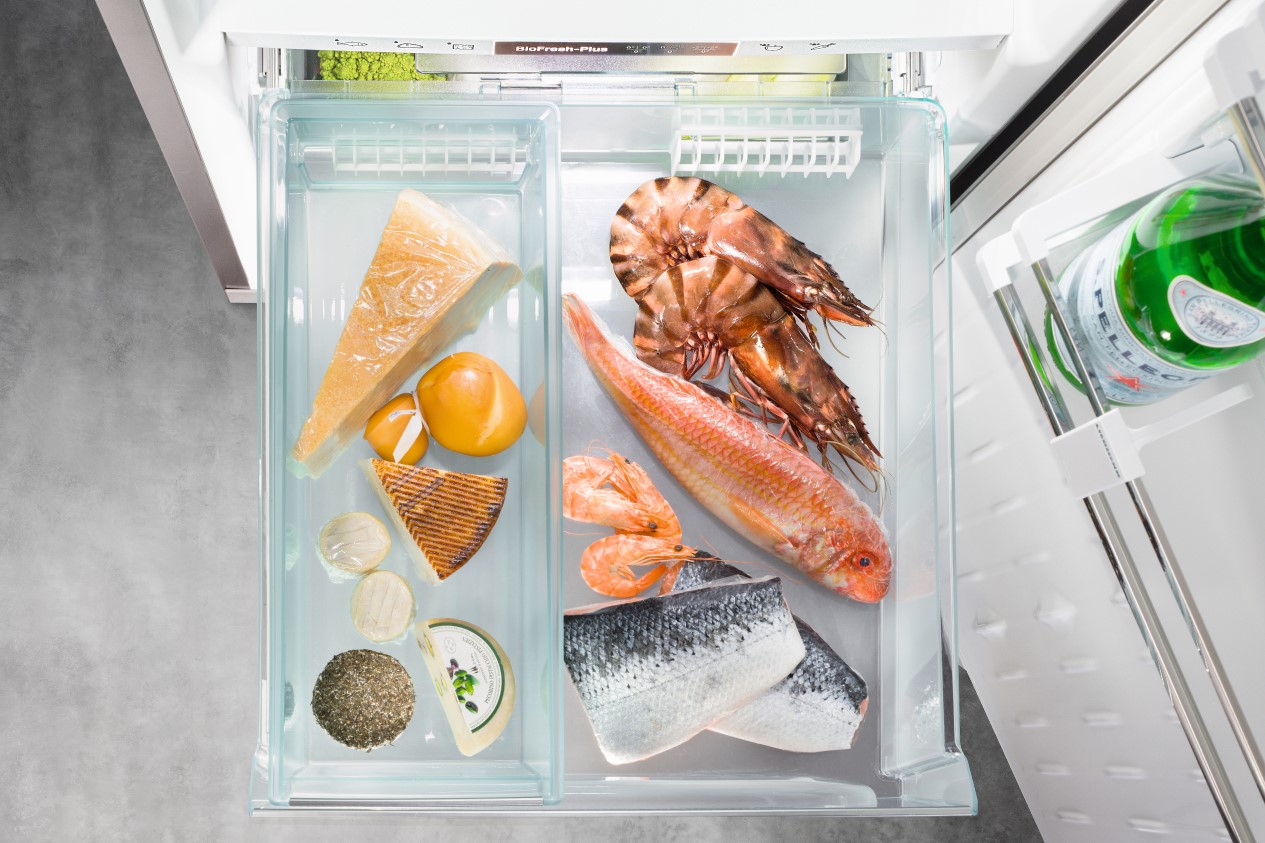
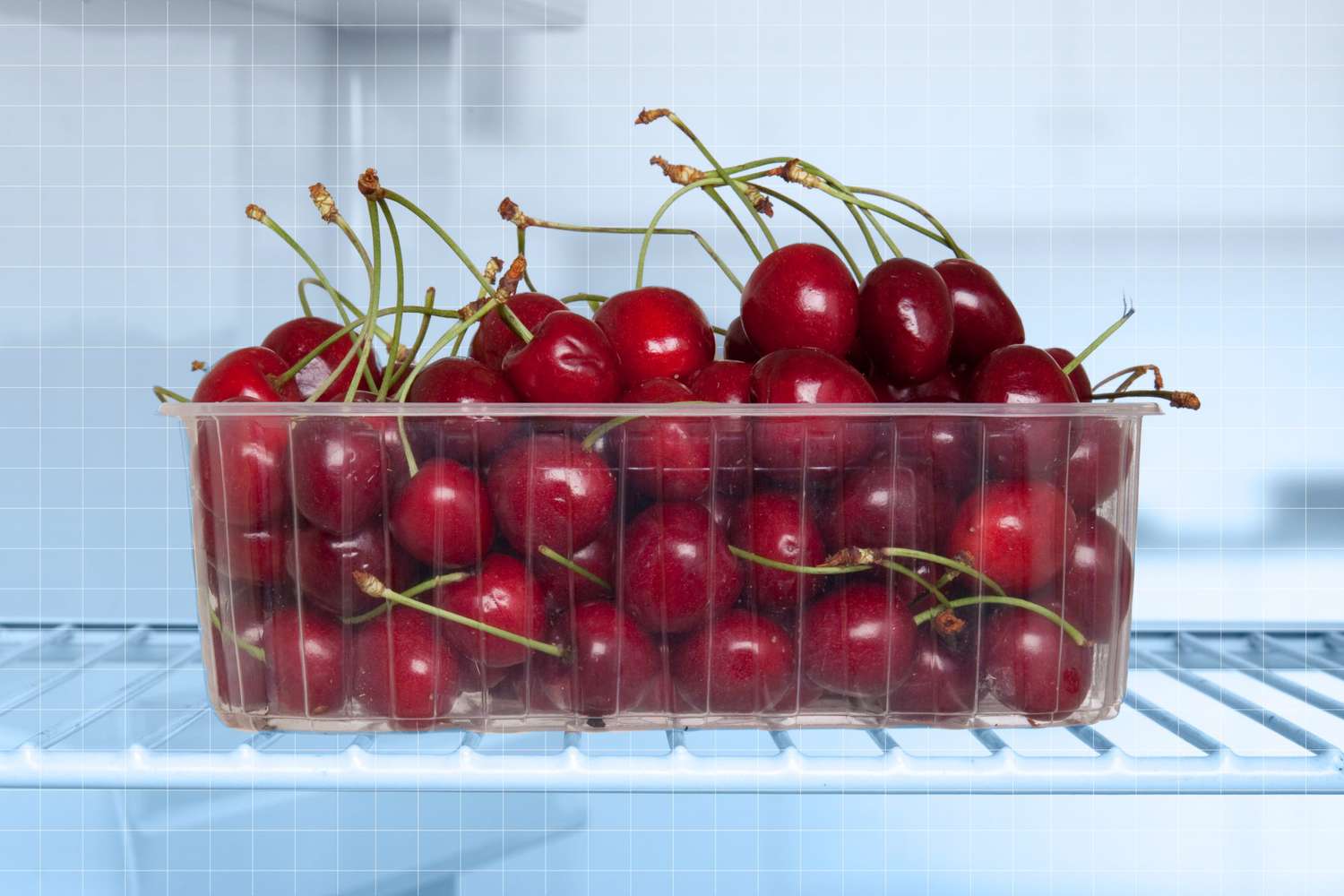
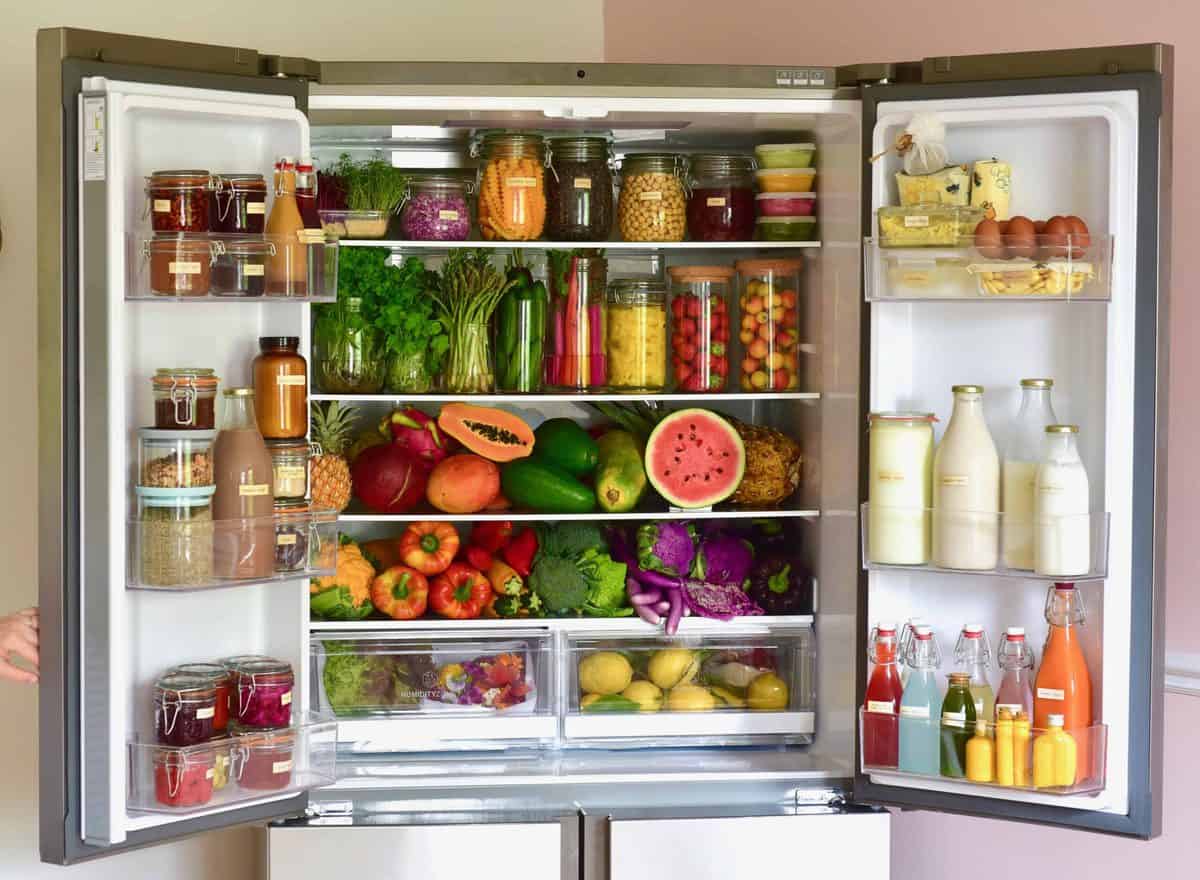
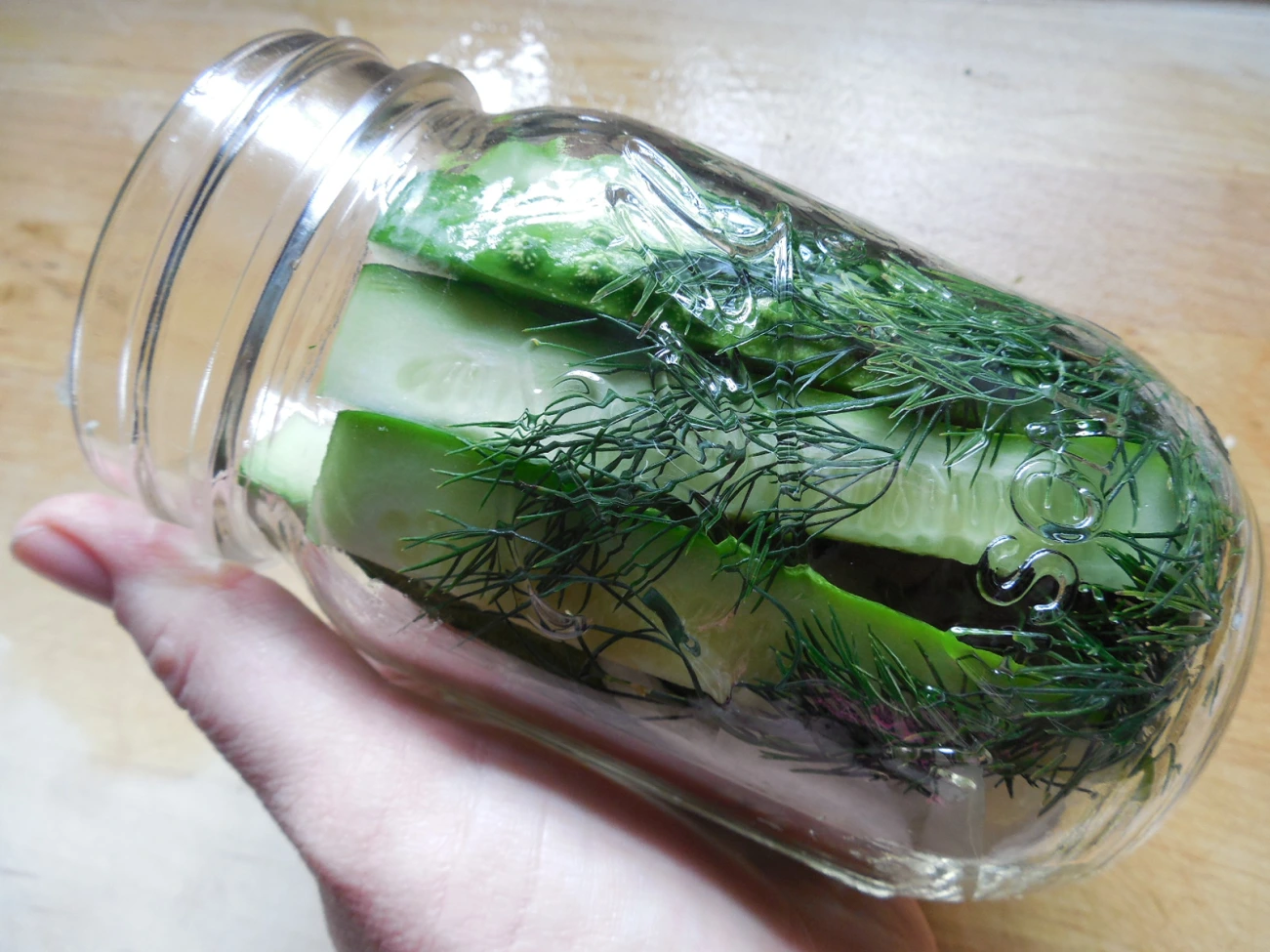
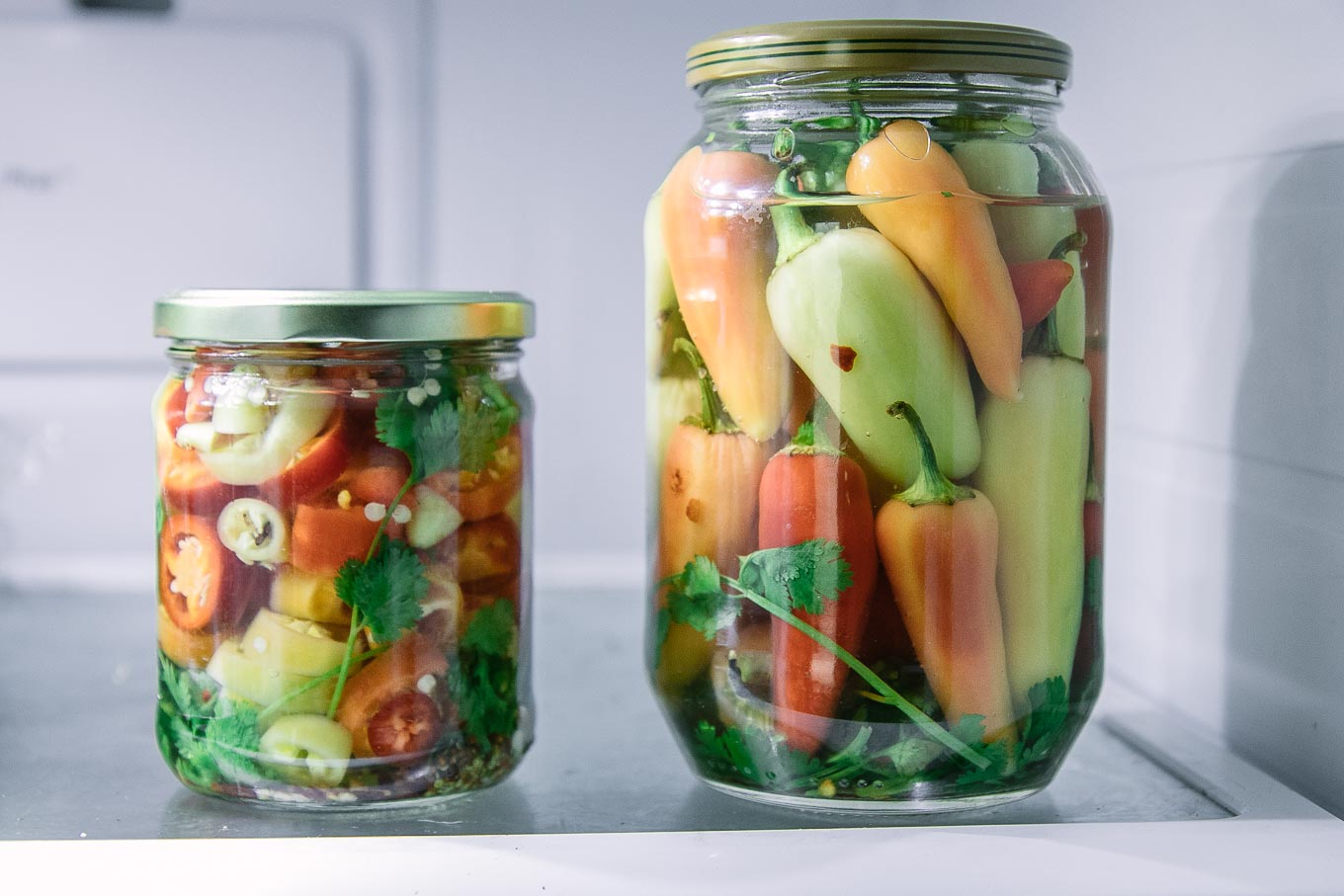

0 thoughts on “How To Store Food In The Refrigerator”